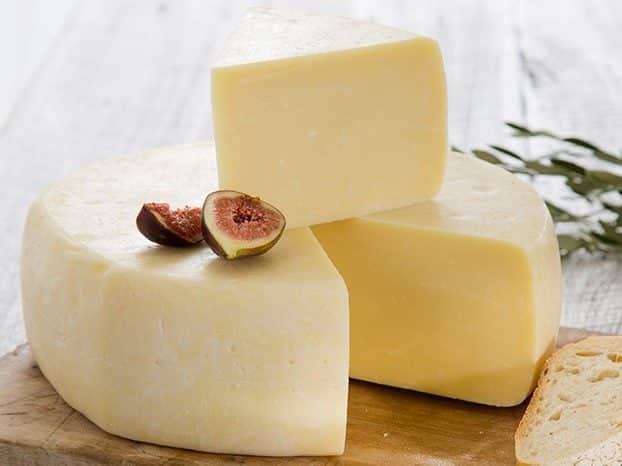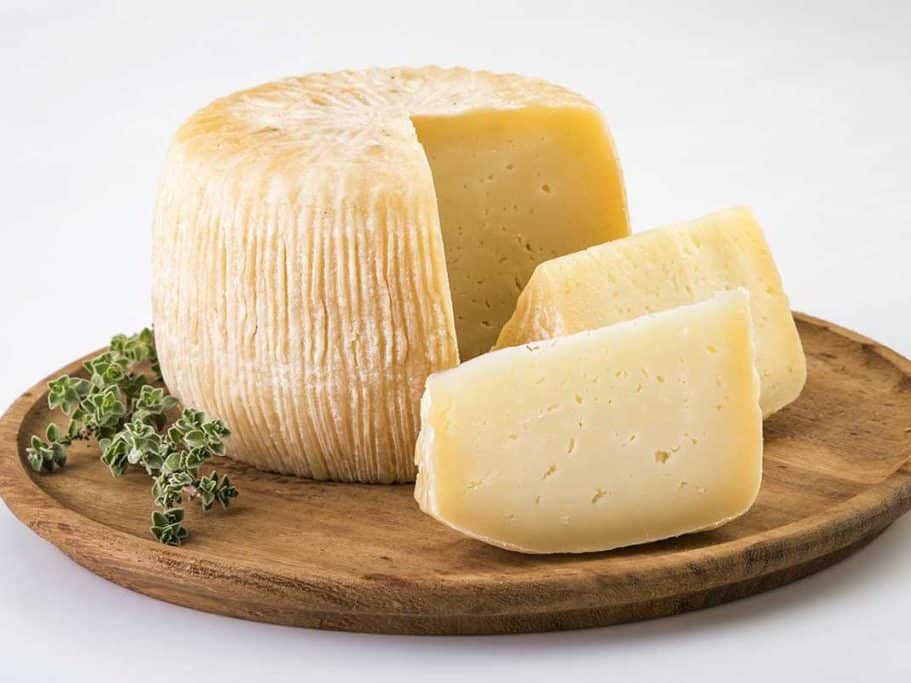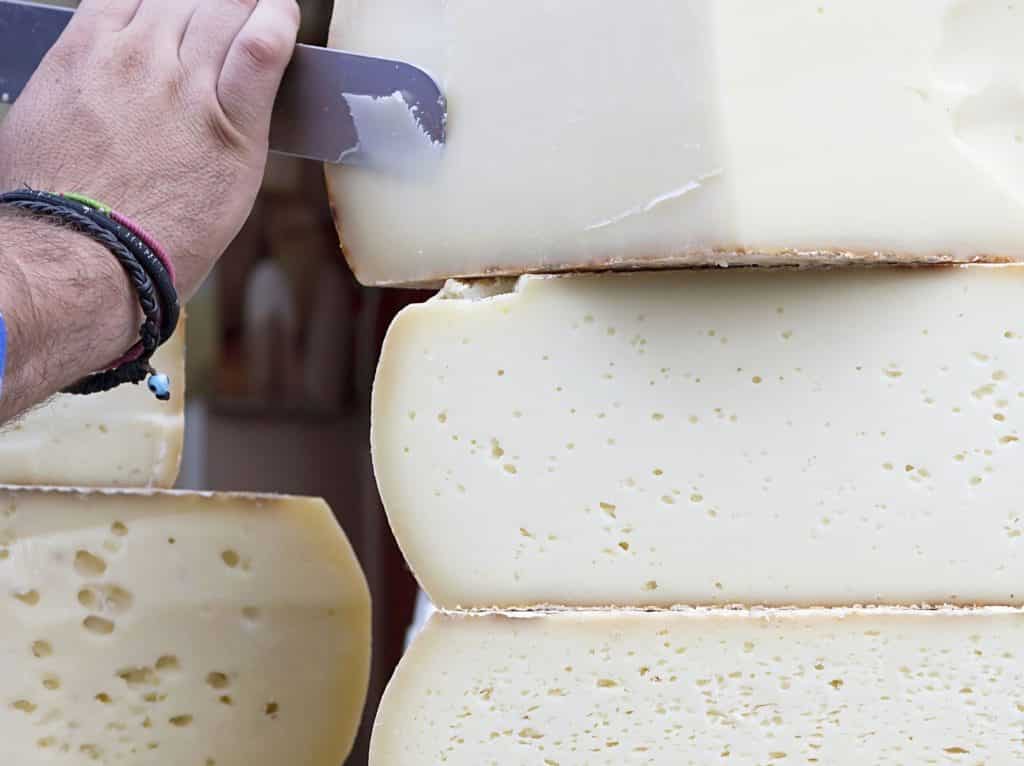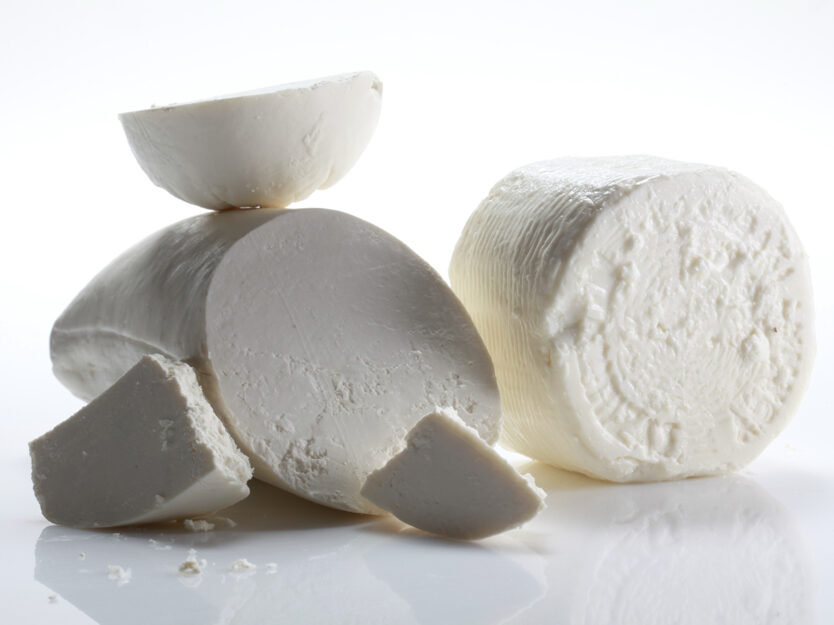Mixed milk cheeses are very common in Greece. But pasta filata cheeses are not. Read on to learn about Kasseri, a mixed milk pasta filata cheese from Lesbos.

Where does Kasseri come from?
Kasseri is a pasta filata cheese produced four specific regions of Greece: the island of Lesbos, Thessaly, Macedonia, and Xanthi in Thrace. Earliest records of this cheese appear at the start of the 19th century. The cheese’s name comes from the Hebrew word kosher. Because the earliest versions of Kasseri did not use rennet, it was a cheese fit for the requirements of Jewish law.
How is Kasseri made?
Like Metsovone, Kasseri belongs to the pasta filata family. Nowadays, it is made by heating milk to 36°C and adding rennet to form the curd. Once the curd is set, the maker divides it into small pieces the size of a corn kernel and wraps them tightly in a cheesecloth to drain.
Once the cheese has fermented, it is cut into thin slices, placed in hot water and stretched in a similar way to Mozzarella. Finally, they salt the kneaded cheese mass and transfer it to moulds for up to three days. The cheese is then ready for maturation which can last up to three months.
How to serve Kasseri
At that age, Kasseri is rindless and has a semi-hard texture. Its taste is buttery and sweet. As it matures further, its flavour profile gradually becomes more savoury.
At room temperature, Kasseri is an excellent addition to sandwiches and omelettes. Because it melts beautifully, it is also often used in baked dishes including pizza. We recommend washing it all down with a full-bodied red wine.
Thank you for reading
Thank you for reading this post about yet another amazing artisanal cheese. Have you tried this cheese before? Drop us a comment below with your thoughts.
If you enjoy learning about new cheeses, you can subscribe to our newsletter below. You will hear from us about once a week as we share new cheese profiles with you.
Finally, keep scrolling to find some more cheeses and recipes that have been recommended for you. Keep it cheesy!



